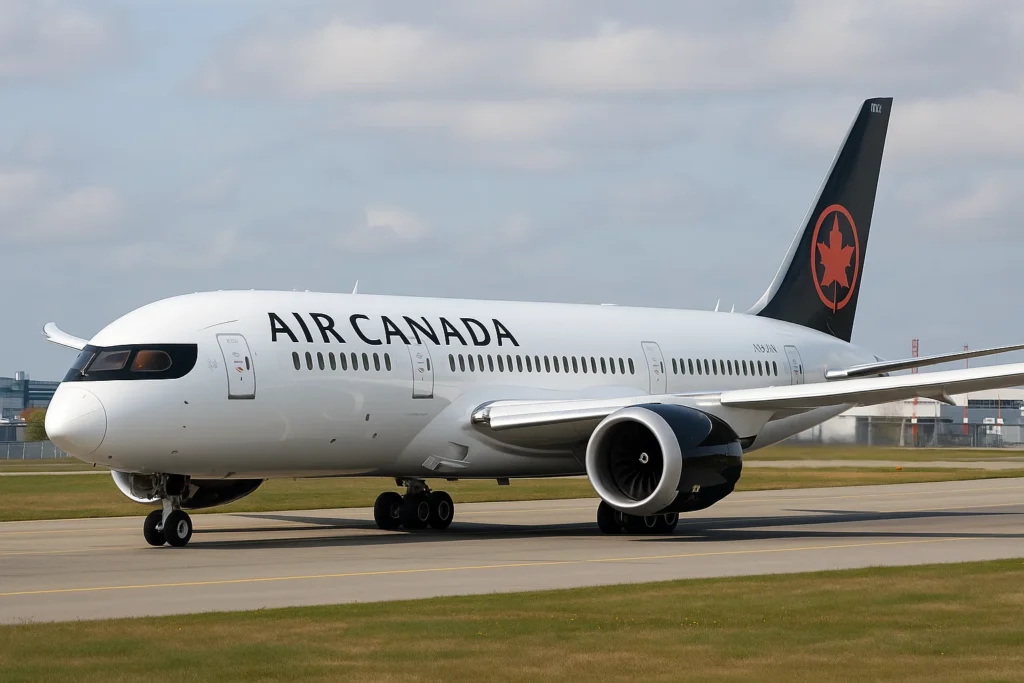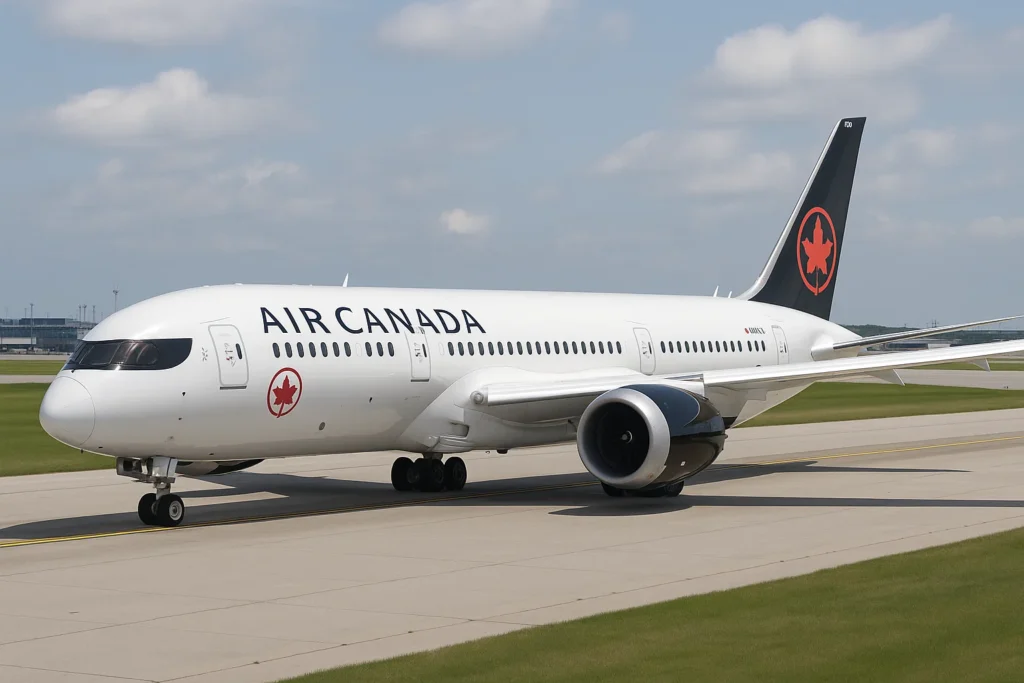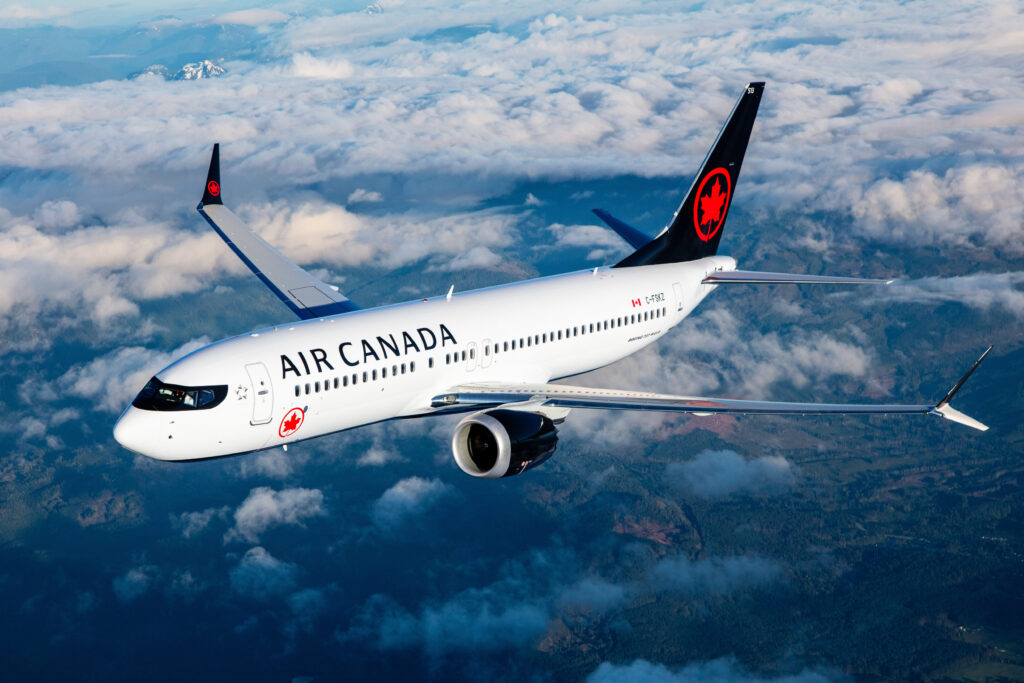Air Canada, Canada’s largest airline and one of North America’s most prominent international carriers, is once again demonstrating how careful, well-calculated growth can strengthen its position in an increasingly competitive marketplace. In a move that reflects both ambition and discipline, the airline has announced the launch of three new routes to the United States beginning in May 2026. These new services will connect Toronto to San Antonio and Montreal to both Cleveland and Columbus, bringing fresh opportunities for travelers while enhancing the airline’s network connectivity.
Unlike aggressive expansions that often flood markets with excess capacity, Air Canada’s decision underscores its measured and disciplined approach. Each new route has been selected with precision, based on passenger demand, connectivity potential, and the ability to feed traffic into Air Canada’s growing global system. The airline is not simply adding destinations; it is reinforcing its role as a connector between Canada, the United States, and the wider world.
Breaking Down the New Flights
Starting May 1, 2026, Air Canada will add three carefully chosen routes to its transborder portfolio.
The most significant addition is the Toronto Pearson International Airport (YYZ) to San Antonio International Airport (SAT) service. This route will operate three times per week and marks Air Canada’s entry into San Antonio, Texas, a city it has never served before. The flights will be operated with the Airbus A220, a next-generation narrowbody aircraft known for its fuel efficiency, modern cabin design, and passenger comfort. With about 137 seats per flight, the A220 is ideally suited to medium-demand routes that require a balance between capacity and efficiency.
San Antonio brings a unique mix of leisure and business traffic. It is one of Texas’s most historic and culturally vibrant cities, offering attractions such as the Alamo, the River Walk, and a year-round warm climate that appeals strongly to Canadian travelers. At the same time, San Antonio has a robust business community, particularly in military, health care, and cybersecurity industries, making it an attractive market for corporate travelers as well. For Air Canada, this new route not only diversifies its US offerings but also creates opportunities for connections from Toronto to global destinations.
The other two new routes are focused on Ohio, a state with significant economic and demographic importance. Air Canada will begin daily service from Montréal–Trudeau International Airport (YUL) to both Cleveland Hopkins International Airport (CLE) and John Glenn Columbus International Airport (CMH). These flights will be operated with the Embraer E175, a regional jet that seats approximately 76 passengers. The E175 is cost-effective, flexible, and perfectly sized for these markets, allowing Air Canada to serve demand consistently without oversupplying capacity.
For Cleveland and Columbus, these routes represent valuable connections not only to Canada but also to Air Canada’s international network. Both cities are home to strong corporate sectors, including healthcare, education, finance, and manufacturing, and they also provide a base of visiting-friends-and-relatives (VFR) traffic. With daily service, passengers can rely on regular schedules, and through Montreal, they can easily connect to transatlantic flights to destinations such as Paris, London, and Frankfurt.
The Strategic Value of These Additions

While the addition of three routes may not appear transformational at first glance, the strategic value they bring to Air Canada’s network is substantial. Each of the chosen cities contributes something different to the airline’s overall goals.
- San Antonio strengthens Air Canada’s reach into the southern United States, a region where the airline has historically had limited direct service. By tapping into both leisure and business travel demand, the route offers balance and diversification.
- Cleveland and Columbus expand Air Canada’s footprint in the Midwest, a region that continues to generate steady corporate travel demand. Both routes also feed passengers into Montreal’s long-haul services, reinforcing the hub’s role as a gateway to Europe.
The scheduling of these flights has been carefully designed to integrate with Air Canada’s hub banks in Toronto and Montreal. For example, passengers arriving from Ohio will find easy connections to Europe or across Canada, while travelers from San Antonio will be able to access Asia or western Canada through Toronto. This connectivity-driven design maximizes the value of each new route, ensuring they serve not just point-to-point demand but also broader international traffic flows.
Disciplined Growth as a Competitive Advantage
Perhaps the most notable aspect of this expansion is the way it reflects Air Canada’s disciplined approach to growth. Rather than chasing flashy route announcements or adding capacity where it cannot be sustained, the airline is focusing on right-sized investments that support long-term profitability.
The Airbus A220 and Embraer E175 are central to this philosophy. Both aircraft are highly efficient and flexible, allowing Air Canada to serve medium-demand routes effectively. The A220, in particular, has become a cornerstone of the airline’s fleet strategy, combining fuel efficiency, passenger comfort, and the ability to operate economically on long-and-thin routes. By deploying the right aircraft in the right markets, Air Canada ensures it maintains competitive costs per available seat mile (CASM) while offering passengers a high-quality travel experience.
This level of discipline matters because aviation markets are inherently volatile. Demand can fluctuate with seasonality, economic cycles, or even geopolitical shifts. By avoiding overexposure and keeping its expansion measured, Air Canada reduces risk while still pursuing growth. It also preserves flexibility, giving the airline the ability to adjust quickly if market conditions change.
Benefits for Passengers

For travelers, the new routes mean more choice, more convenience, and more seamless journeys. Canadian travelers gain a direct connection to San Antonio, opening the door to one of Texas’s most historic and enjoyable destinations without the need for connections through US hubs. Business travelers in Texas gain access to Toronto’s international gateway, with smooth onward links to Europe and Asia.
For Ohio travelers, the benefits are equally significant. Daily flights from Cleveland and Columbus to Montreal provide easy access not only to Canada but also to Air Canada’s transatlantic network. This makes Air Canada an appealing option for corporate travelers who need reliable schedules and premium service, as well as leisure travelers looking for new international options.
In short, these routes enhance connectivity on both sides of the border. They provide valuable alternatives to the dominant US legacy carriers, giving travelers greater flexibility in how they reach their destinations.
Air Canada’s Place in the Competitive Landscape
In launching these routes, Air Canada is also reinforcing its role in the competitive transborder market. The US–Canada corridor is one of the busiest international markets in the world, with strong presences from United, Delta, and American Airlines. By choosing routes that connect to its hubs, Air Canada is ensuring it can compete not just on point-to-point traffic but on connectivity and global reach.
This is where Air Canada’s strategy stands out. While US carriers focus heavily on domestic networks, Air Canada leverages its Canadian hubs to offer something different: smooth, one-stop access to Europe and Asia. By linking markets like San Antonio, Cleveland, and Columbus into this system, the airline adds value that goes beyond simple direct flights.
Looking Toward the Future
Air Canada’s May 2026 expansion may look modest in terms of numbers—just three new routes—but in reality, it reflects a thoughtful, sustainable approach to network growth. The airline is carefully shaping a network that balances demand with efficiency, profitability with passenger experience, and short-term opportunities with long-term goals.
Challenges will inevitably arise. Corporate demand in Ohio must remain steady for the routes to succeed, leisure traffic to San Antonio will be seasonal, and US competitors may respond with adjustments of their own. Yet Air Canada’s use of efficient aircraft, its hub-based connectivity, and its disciplined strategy all provide a strong foundation for these routes to succeed.
For passengers, this expansion signals that Air Canada remains deeply committed to improving travel between Canada and the United States. For the airline, it represents another step in solidifying its reputation as a disciplined, globally connected carrier capable of sustainable growth in an evolving industry.
Conclusion
Air Canada’s upcoming launch of routes from Toronto to San Antonio and from Montreal to Cleveland and Columbus in May 2026 is more than just an expansion of its route map. It is a statement of strategy, discipline, and commitment to its passengers. By choosing aircraft that are efficient and right-sized, aligning schedules with global hubs, and selecting markets that balance leisure and business demand, the airline is building connections that matter.
For travelers, the new flights mean greater convenience, new opportunities, and stronger links between Canada, the United States, and the rest of the world. For Air Canada, they mark yet another demonstration of how smart, sustainable growth can position an airline not just to compete but to thrive in the long run.
In these three new routes, Air Canada shows that expansion is not always about size. Sometimes, it is about precision, balance, and knowing how to grow smartly while serving strategically.

